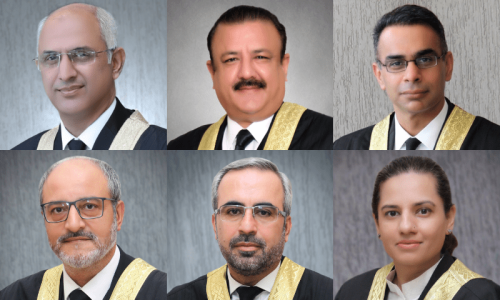For whom the bell tolls
The 16th day of April in 1853 is special in the Indian history. The day was a public holiday. At 3:30 pm, as the 21 guns roared together, the first train carrying Lady Falkland, wife of Governor of Bombay, along with 400 special invitees, steamed off from Bombay to Thane.
Ever since the engine rolled off the tracks, there have been new dimensions to the distances, relations and emotions. Abaseen Express, Khyber Mail and Calcutta Mail were not just the names of the trains but the experiences of hearts and souls. Now that we live in the days of burnt and non functional trains, I still have a few pleasant memories associated with train travels. These memoirs are the dialogues I had with myself while sitting by the windows or standing at the door as the train moved on. In the era of Cloud and Wi-Fi communications, I hope you will like them.
Read part 1 of this blog here and part 2 here.

Known for its Godliness, Multan is a city with humility. Though, in foreign lands most of its cultural representation is done by blue pottery, the Sufi tradition of the city is far more representing.
Initially, Hindu Bhagats marked the divine scene of Multan but with the rise of Islam, Muslim saints slowly filled the sphere. Some of these sages made Multan their home, while others stayed for a while, for the purpose of learning.
Deevaan Chawli Shareef is considered to be amongst the first of the Muslim tradition. This son of Raja Mehpaal, a Hindu Rajput chief, embraced Islam and renamed himself as Sheikh Chawli. The conversion cost him his life at the hand of his brothers but his memory was kept alive by the local population, who developed an entire locality in his memory.
Next in line, was Shah Yousuf Gardez, who had the honour of spending illustrative time with Meera Mauj Darya, the famous saint of Lahore. After his death, the faithful made him a mausoleum, so unique in architecture that its samples are now at display at Cromwell Road, London.
Multan also has the honour of housing Moeen-ud-Din Chishti Ajmeeri, the famous saint, who lived here for five years. During his stay, he practiced medicine and learnt Sansikrat and Parakarat from the augurs of Prahlad temple.
Following the course, Qutb-ud-Din Bakhtiar Kaki also visited Multan. It was here that he met Baba Farid, who requested to be admitted into the pupilage of Qutb-ud-Din Bakhtiar Kaki. Famous as Ganj Shakar, this saint founded meditation centres which were replicated in lands like the Middle East. His nearly divine poetry cut through rigid social structures, quite successfully.
Another significant name in the mystics of Multan is Baha-ud-Din Zakarya. After graduating from centers of learning at Khurasan, Bukhara and Medina, he arrived at Multan and founded the first ever seminary of the Suhrawardiya school of thought. Famous across the Indian subcontinent for its library, this seminary produced scholars of remarkable scholastic standing who went on to establish academic institutions across the world. Besides being a religious scholar, Baha-ud-Din Zakarya also mastered the art of calligraphy, poetry and music. The symphony of the Multani Dhanasri is attributed to his genius. He designed his mausoleum, which was badly damaged in the war of 1848. Initially, the residents looked toward the British societies for restoration, failing that, they contributed and rebuilt the building themselves.
Amongst other reasons for the raging summers, Shah Shams Sabzwari is also known to have played his part. Born in the Iranian city of Sabzwar, this saint spread the word of God as far as Badakhshan and Tibet. After a short stay in Tibraiz, he migrated to Multan and stayed here for rest of his life. All those who embraced Islam by his virtue, took up the surname, Shamsi. His reverence though, earned him a sizable Hindu following too. Known as the Shamsi Hindus, they lived in Multan, before partition.
Shah Rukn-e-Alam is another reference of Multan. Born to the godly Bibi Pak Daman, he was initially named as Rukn-ud-Din. The name Alam was a later addition, advised by Shah Shams. Shah Rukn-e-Alam taught the message of love and humility for many decades but in the last one, he chose to stay in his seminary. On the last day, after administering the preparations for his burial, he led the evening prayers and passed away, peacefully. The mausoleum of Shah Rukn-e-Alam continues to be the signature building in the city, with its domes casting lasting impressions.
Other than these famous saints, men like Sadr-ud-Din Arif, Khwaja Hassan Afghan, Syed Jalal-ud-Din Surkh Bukhari, Shaikh Rukn-ud-Din Abu al-Fateh, Shaikh Hassam-ud-Din Multani, Makhdoom Jahanian Jahan Gasht, Syed Sadr-ud-Din Raju Qitaal, Shah Dana Shaheed, Shah Ali Muhammad, Sheikh Hussan Kaah Bar, Peer Darbar Shah, Moosa Pak Shaheed, Muhammad Jamal Multani, Khwaja Khuda Bakhsh, Suleman Taunsavi, Ghulam Hassan Shaheed and Abdul Rasheed Haqqani also added to the spiritual ambience of the city.
Another facet of Multan appears on the surface, in Ashoor. As the moon of the first Islamic month is sighted, the city dons itself in a mourner’s black. According to a group of historians, Shahdad Bin Chaakar was the first Shia scholar in Multan, while the other group attributes this tradition with the relocation of the Iranian nobles to Multan to escape the barbaric Mongols. In either case, Multan adopted the tradition and adopted it well.
The most beautiful shade of this tolerant cosmos was a branch of Punjabi Mohyals, who called themselves, Hussaini Brahmins. Descending from Rahib Dutt, who was believed to have fought in Karbala, these Brahmins had a sizable population in Multan and held Imam Hussain in great reverence. Few believe that these Brahmins were the initial masters of the craft of Marsiya and also scripted the first few Jang-namas of the famed battle or epics, in Prakarats. Multani Marsiya may not join the league of Anees and Dabeer but they surely have their own impact, depiction and diction. Another brilliant mix of religion and aesthetics is exhibited in the form of the Tazia and can be seen at its best in the Taziya of Ustad, Shagird and Kamangaran.
The Sufis of Multan not only served religion but also introduced a model lifestyle, based on mutual understanding and peaceful co-existence. These saints believed that nothing could bind humankind as powerfully as love and care. New definitions needed newer expressions, so the delicacy called Urdu also flourished, by default.
From architecture to linguistics and calligraphy to modesty, most artistic effects in Multan carry a Sufi blessing. From its soil, rose men, the likes of Kazmi, Bukhari, Jalandheri and Karnali, and are still rising, the likes of Musadiqs and Sanwals.
The city is, at best, enviable…
[To be continued…]
Listen to this blog in Urdu:













































